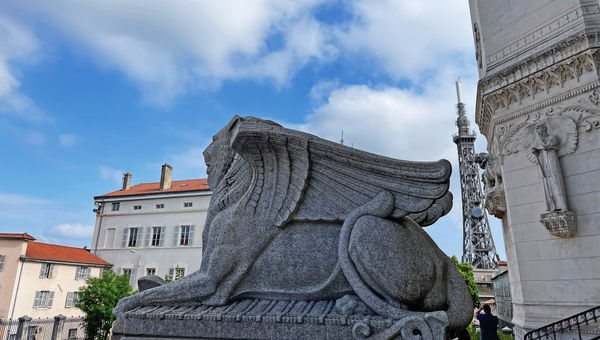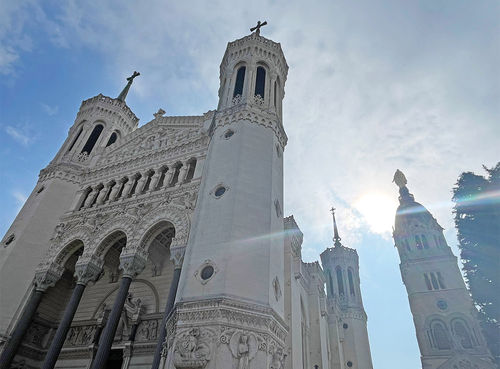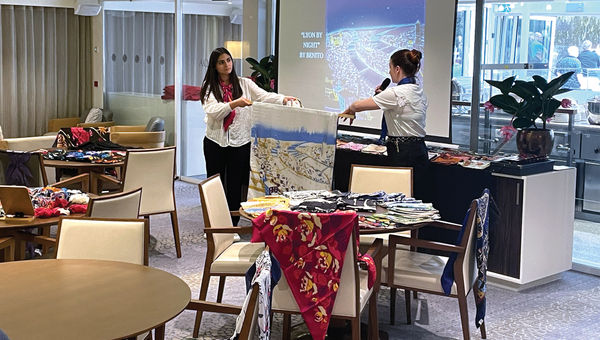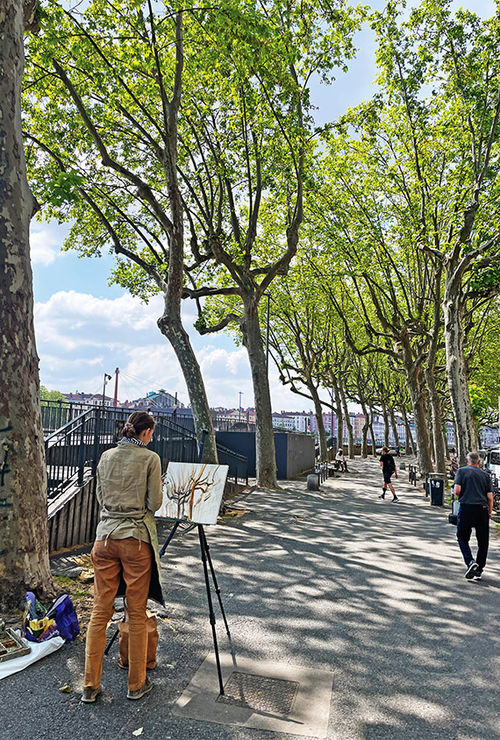This is the first in a series of three "second city" stories. A second city is generally considered to be the second-largest or runner-up among culturally significant capitals in a region. With this series, contributor Brittany Chrusciel encourages readers to consider these European cities as desirable, first-rate destinations.
Paris and France go together like coffee and croissants.
It's this instant association with the City of Light that blinds most tourists from even considering many of France's other intriguing destinations. As capital of the Auvergne-Rhone-Alpes region, medieval Lyon is still behind Marseille in size, but in terms of historical and cultural influence, it's almost unmatched.
During World War II, Lyon was the center of the country's Resistance movement and a stronghold of Free France during Nazi occupation. Stretching well beyond the 20th century, Lyon has been an epicenter of commerce and community. Traboules -- merchant passageways dating to the fourth century -- still discreetly wind their way through Vieux (Old) Lyon. An amphitheater completed in 15 B.C. once hosted gladiator fights and remains the oldest Roman structure of its kind in the country.
Sure, Paris has Notre Dame, which even as it is being reconstructed is still attracting scores of visitors. But Lyon also has a Notre Dame; it's perched on a hilltop overlooking the city. And wouldn't you know it, next to the basilica is a mini-replica of the Eiffel Tower. But Lyon also has much to offer that you won't find in its more celebrated sister city 300 miles to the north.

The Eiffel Tower replica in Lyon. Photo Credit: Brittany Chrusciel
For instance:
Paris has Alain Ducasse. Lyon has Paul Bocuse.
It's the battle for the coveted title of "world's gastronomic capital" that most greatly divides the residents and epicureans of Paris and Lyon. Ducasse is one of the most highly awarded chefs in history, with 21 Michelin stars and counting; among them, for bistro Benoit Paris.
But Lyon has a secret weapon of both long-standing culinary traditions and the late Bocuse that have helped shape and elevate the landscape of Lyonnaise cuisine.
With a focus on local ingredients and simplicity, Bocuse formed an empire of French cuisine from his lifelong home of Lyon. L'Auberge du Pont de Collonges held Michelin's three-star rating, the guide's highest, for 55 years (it was downgraded to two stars in 2020). A more approachable chain of four brasseries -- named for each of the main points on the compass -- introduce guests to Bocuse's signature flavors. Today, locals and visitors also frequent family-owned bouchons that date to the 1600s. These homey, tavern-like restaurants serve Lyon's hearty comfort food of sausages, tripe, potatoes and quenelles, a type of dumpling often made from fish or meat and egg.

Notre Dame de Fourviere sits atop a hill that overlooks Lyon. Photo Credit: Brittany Chrusciel
Paris has the Louvre. Lyon has the Lumieres.
The Mona Lisa and the Venus de Milo, two of the most recognizable works of art in the world, make their home in the Paris museum. But another art form, motion pictures, had its start in Lyon when Auguste and Louis Lumiere began experimenting with developing film in 1881. By 1895, the cinematographe became the first viable motion picture camera, improving upon what was considered a clunkier design by Thomas Edison.
Anyone interested in the pioneers of cinema can visit the Musee Lumiere in the brothers' childhood home in the neighborhood of Monplaisir. The Institut Lumiere is part of the museum, founded by Louis' grandson, and works to promote and preserve French filmmaking. Daily film screenings and a film festival each October are held on site. Stand on the exact place where, in March 1895, the brothers filmed "Workers Leaving the Lumiere Factory," widely considered to be the world's first film. (Editor's note: The Musee Lumiere is currently closed but will reopen in September.)

A silk demonstration on a Viking river cruise; Lyon has a rich history with the fabric. Photo Credit: Brittany Chrusciel
Paris has couture. Lyon has silk.
The influence of Paris' fashion houses, from Chanel to Dior, has left an indelible impression on the world of luxury clothing design.
Among the fine fabrics used for many of these garments is silk. Lyon's history of silk-making is a storied one, stretching back to family looms along the Saone River employed for personal use in medieval times. Soon, silk became a coveted material of the French aristocracy, and in 1466, King Louis XI funneled money to Lyon to transform a small community of silk weavers into a silk manufacturing hub. By 1540, Lyon was granted a monopoly on raw silk imports throughout France, centralizing the industry and fueling a booming trade center.
Lyon's silk fever reached a pitch in the 1600s and all but halted due to revolts against poor labor conditions by the canuts (Lyonnaise silk workers) throughout the 18th century.
The introduction of the Jacquard loom during this time boosted output and drew the attention of the visiting Bonapartes, reviving the silk trade once again. Today, the Maison des Canuts is a museum and functioning workshop where visitors can bear witness to Lyon's multilayered silk-making history and also splurge on a chiffon scarf.

An artist creates on the banks of the Rhone. Photo Credit: Brittany Chrusciel
Paris has the Seine. Lyon has the Rhone (and the Saone).
Dean Martin is just one of many to immortalize "The River Seine" in song. It's been the subject of artists like Claude Monet and the setting of films from James Bond to the work of Luis Bunuel.
Lyon, on the other hand, lies at the confluence of two scenic rivers, the Rhone and Saone, that like the Seine have played a significant role in the city's identity. Visitors can learn more about these influences at the Musee des Confluences, a center exploring the science and anthropology of the rivers' impact on Lyon and the rest of the country.
The museum is one of several located along the riverfront, and there is a lovely tree-lined walkway, as well. Lyon is typically the departure point for Rhone cruises, like the South of France itineraries I've sailed with Viking and Avalon, and most river cruises include an overnight here. But clearly Lyon is a city that is deserving of a much longer look.